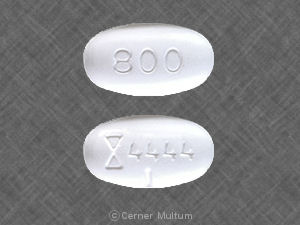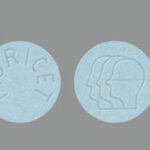Gabapentin is used with other medications to prevent and control seizures. It is also used to relieve nerve pain following shingles (a painful rash due to herpes zosterinfection) in adults. Gabapentin is known as an anticonvulsant or antiepileptic drug.

Before taking gabapentin, tell your doctor or pharmacist if you are allergic to it; or to gabapentin enacarbil; or if you have any other allergies. This product may contain inactive ingredients, which can cause allergic reactions or other problems. Talk to your pharmacist for more details.
Before using this medication, tell your doctor or pharmacist your medical history, especially of: kidney disease, mental/mood problems (such as depression, thoughts of suicide), use/abuse of drugs/alcohol.
This drug may make you dizzy or drowsy or cause blurred vision. Do not drive, use machinery, or do any activity that requires alertness or clear vision until you are sure you can perform such activities safely. Limit alcoholic beverages.
Before having surgery, tell your doctor or dentist about all the products you use (including prescription drugs, nonprescription drugs, and herbal products).
Older adults may be more sensitive to the side effects of this drug, especially swelling of the hands/ankles/feet, dizziness, or loss of coordination. Dizziness and loss of coordination can increase the risk of falling.
Children may be more sensitive to the side effects of this drug, especially mental/mood/behavior changes (such as hostility, problems concentrating, restlessness).
During pregnancy, this medication should be used only when clearly needed. Discuss the risks and benefits with your doctor.
Gabapentin passes into breast milk. Consult your doctor before breast-feeding.
Treatment by Condition Related to Gabapentin
- Additional Medication to Treat Partial Seizures Medications
- Neuropathic Pain Medications
- Extreme Discomfort in Calves when Sitting or Lying Down Medications
- Epileptic Seizure Medications
- Involuntary Quivering Medications
- Essential Tremor Medications
- Convulsive Seizures Medications
- Nerve Pain after Herpes Medications
- Acute Pain Following an Operation Medications
- Simple Partial Seizures Medications
- “Change of Life” Signs Medications
- Pain Originating From a Nerve Medications
Gabapentin can be used for preventing migraine, treat nerve pain, restless legs syndrome, and Fibromyalgia. Actually Gabapentin relieves the pain of PHN by changing the way the body senses pain. You can buy Gabapentin to treat attention deficit hyperactivity disorder (ADHD), alcohol withdrawal, chronic neuropathic pain, cocaine addiction, diabetic peripheral neuropathy,generalized anxiety disorder (GAD), fibromyalgia, menopause, migraine prevention, panic disorder, post-traumatic stress disorder (PTSD), social phobia, trigeminal neuralgia.
Gabapentin can also be used for more than 30 off-label health conditions such as: Benign Essential Tremor,,Bipolar Disorder,,Burning Mouth , yndrome, Cluster-Tic Syndrome, Cough, Diabetic Peripheral europathy, Epilepsy, Erythromelalgia, Fibromyalgia, Hiccups, Hot Flashes, Hyperhidrosis, Insomnia, Lhermitte’s Sign, Migraine, Nausea/Vomiting, Chemotherapy Induced, Neuropathic Pain, Occipital Neuralgia, Pain, Periodic Limb Movement Disorder, Peripheral Neuropathy, Postherpetic Neuralgia, Postmenopausal Symptoms,Pruritus,,Pudendal Neuralgia,,Reflex Sympathetic Dystrophy Syndrome, Restless Legs Syndrome, Small Fiber europathy, Spondylolisthesis, Syringomyelia, Transverse Myelitis, Trigeminal Neuralgia, Vulvodynia. For more information, please check drug.com Gabapentin page.
How should I take gabapentin?
Take gabapentin exactly as prescribed by your doctor. Follow all directions on your prescription label. Do not take this medicine in larger or smaller amounts or for longer than recommended.
The Horizant brand of gabapentin should not be taken during the day. For best results, take Horizant with food at about 5:00 in the evening.
Both Gralise and Horizant should be taken with food.
Neurontin can be taken with or without food.
If you break a Neurontin tablet and take only half of it, take the other half at your next dose. Any tablet that has been broken should be used as soon as possible or within a few days.
Measure liquid medicine with the dosing syringe provided, or with a special dose-measuring spoon or medicine cup. If you do not have a dose-measuring device, ask your pharmacist for one.
If your doctor changes your brand, strength, or type of gabapentin, your dosage needs may change. Ask your pharmacist if you have any questions about the new kind of gabapentin you receive at the pharmacy.
Do not stop using gabapentin suddenly, even if you feel fine. Stopping suddenly may cause increased seizures. Follow your doctor’s instructions about tapering your dose.
Wear a medical alert tag or carry an ID card stating that you take gabapentin. Any medical care provider who treats you should know that you take seizure medication.
Gabapentin can cause you to have a false positive urine protein screening test. If you provide a urine sample for testing, tell the laboratory staff that you are taking gabapentin.
Store tablets and capsules at room temperature away from light and moisture.
Store the liquid medicine in the refrigerator. Do not freeze.
Gabapentin dosing information
Usual Adult Dose for Epilepsy:

Initial dose: 300 mg orally on day one, 300 mg orally twice a day on day two, then 300 mg orally 3 times a day on day three.
Maintenance dose: 900 to 1800 mg orally in 3 divided doses. If necessary, the dose may be increased using 300 mg or 400 mg capsules three times a day up to 1800 mg/day. Dosages up to 2400 mg/day have been well tolerated in long-term clinical studies. Doses of 3600 mg/day have also been administered to a small number of patients for a relatively short duration, and have been well tolerated. The maximum time between doses in the three times a day schedule should not exceed 12 hours.
The safety and effectiveness of gabapentin available under the trade name Gralise (R) or Horizant (R) in patients with epilepsy has not been studied.
Usual Adult Dose for Postherpetic Neuralgia:
Initial dose: 300 mg orally on day one, 300 mg orally twice a day on day two, then 300 mg orally 3 times a day on day three.
The dose may be titrated up as needed for pain relief to a daily dose of 1800 mg.
Maintenance dose: 900 to 1800 mg orally in 3 divided doses.
Efficacy was demonstrated in clinical studies over a range of 1800 mg/day to 3600 mg/day. However, no additional benefit was demonstrated from the use of doses over 1800 mg/day.
Gabapentin available under the trade name Gralise (R):
Maintenance dose: Gralise (R) should be titrated to 1800 mg orally once daily with the evening meal.
Recommended titration schedule:
Day 1: 300 mg orally with the evening meal
Day 2: 600 mg orally with the evening meal
Days 3 through 6: 900 mg orally with the evening meal
Days 7 through 10: 1200 mg orally with the evening meal
Days 11 through 14: 1500 mg orally with the evening meal
Day 15: 1800 mg orally with the evening meal
Gralise (R) is not interchangeable with other gabapentin products because of differing pharmacokinetic profiles that affect the frequency of administration.
Gabapentin enacarbil extended release tablets available under the trade name Horizant (R):
The recommended dosage is 600 mg orally twice daily. Therapy should be initiated at a dose of 600 mg orally in the morning for 3 days of therapy, then increased to 600 mg twice daily (1,200 mg/day) on day four.
Gabapentin enacarbil extended release tablets available under the trade name Horizant (R) and gabapentin are not interchangeable.
Usual Adult Dose for Restless Legs Syndrome:
Gabapentin enacarbil available under the trade name Horizant (R):
600 mg orally once daily with food at about 5 PM
Usual Pediatric Dose for Epilepsy:
Less than 3 years: Effectiveness has not been established.
Greater than or equal to 3 and less than 12 years:
Starting Dose: ranges from 10 to 15 mg/kg/day in 3 divided doses.
Effective Dose: reached by upward titration over a period of approximately 3 days. The effective dose of gabapentin in patients 5 years of age and older is 25 to 35 mg/kg/day and given in divided doses (three times a day). The effective dose in pediatric patients ages 3 and 4 years is 40 mg/kg/day and given in divided doses (three times a day). Gabapentin may be administered as the oral solution, capsule, or tablet, or using combinations of these formulations. Dosages up to 50 mg/kg/day have been well tolerated in a long term clinical study. The maximum time interval between doses should not exceed 12 hours.
Greater than 12 years:
Initial dose: 300 mg orally on day one, 300 mg orally twice a day on day two, then 300 mg orally 3 times a day on day three.
Maintenance dose: 900 to 1800 mg orally in 3 divided doses. If necessary, the dose may be increased using 300 mg or 400 mg capsules three times a day up to 1800 mg/day. Dosages up to 2400 mg/day have been well tolerated in long term clinical studies. Doses of 3600 mg/day have also been administered to a small number of patients for a relatively short duration, and have been well tolerated. The maximum time between doses in the three times a day schedule should not exceed 12 hours.
